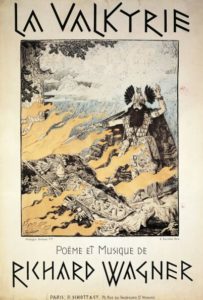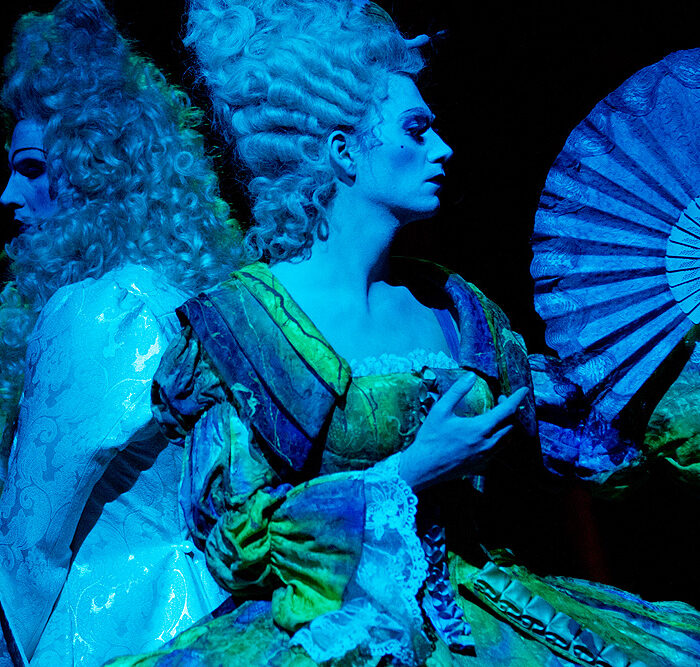
Opera Profile: Wagner’s ‘Die Walküre’
By David SalazarOf the four operas that comprise “Der Ring des Nibelungen,” perhaps none is more famous than “Die Walküre.” Not only does the work contain the best-known piece of music that Wagner ever wrote (The Ride of the Valkyries), but it contains some of the most compelling and unforgettable musico-dramatic moments in the entire canon.
Moreso, of the four operas, none is more human, the other three delving more into the mythological realms of the composer’s magnum opus.
“Die Walküre” had its world premiere on June 26, 1870. Wagner actually conceived the work after “Götterdämmerung” and “Siegfried” and actually completed the libretto in 1852 and the full score was done by 1856.
Short Plot Summary
The opera opens with the chase of Siegmund by his enemies. He finds shelter in a hut where he is tended to by Sieglinde, who unbeknownst to both, is his sister. The two fall in love, a fact that isn’t lost on Sieglinde’s violent husband Hunding. Upon learning of Siegmund’s story, Hunding promises to duel him the next day. Siegmund and Sieglinde recognized one another and Siegmund pulls Nothung the sword from a nearby tree. The two run off to consume their passion.
Up in Valhalla, Fricka urges Wotan to destroy Siegmund for desecrating the marriage of Hunding and Sieglinde. He has conflicted feelings about it, but agrees, since he is bound up in his contracts. His daughter Brünhilde tries to convince him otherwise, but he makes her promise not to provide aid to Siegmund.
The two Valsungs find themselves lost in the forest and Sieglinde is pregnant. Brünhilde appears to Siegmund to invite him to Valhalla, but he rejects the notion upon discovering that Sieglinde cannot come. He decides to murder his wife and child, but Brünhilde promises to aid him. Hunding appears and Brünhilde aids her step-brother. However, Wotan arrives, snaps his son’s sword and allows him to die. Brünhilde escapes with Sieglinde and the sword. Wotan kills Hunding and then races after his traitorous daughter.
Brünhilde seeks shelter from the Valkyries but turns herself over to Wotan when he arrives. Sieglinde escapes into a nearby forest and Wotan puts Brünhilde to sleep atop a rock. He protects her with Loge’s fire decreeing that only the hero that has no fear or guidance from Wotan can cross the threshold and espouse Brünhilde.
Famous Musical Numbers
The ride of the Valkyries is the obvious one, the section famous for its uplifting heroics.
But the work has far more precious musical gems, including the entire first act which is a perfect dramatic feat unto itself. We feel the love of the two grow, the emotions born out of a yearning cello solo and building into a frenetic and sexual outburst of violins at the climax. The final chords, dissonant and frightening hint at the fate to come.
Fricka’s winding musical solo is her only appearance in the opera, but its bitter melody packs quite the punch.
The second act exchange between Brünhilde and Siegmund is quite mystical and mysterious in its early exchanges but builds into a monumental climax wherein Brünhilde pledges allegiance to her brother.
But perhaps the most gorgeous musical section is the entire ending exchange between Wotan and Brünhilde, a weeping melody on a lone wind instrument flourishing into a pained violin outcry during Wotan’s sublime “Farewell.” That of course if followed by the ever-wondrous fire music that closes the work.
Watch and Listen
There are so many offerings of this opera out there with some of the greatest singers to ever grace the opera world, but you can’t go wrong with the Patrice Chéreau production conducted by Pierre Boulez that sent shockwaves through the musical world. It has a fine cast to boost with Gwyneth Jones as Brünhilde, Donald McIntyre as Wotan (his Farewell is tear-inducing) and Peter Hofmann as Siegmund.
It may not be a traditional production, but it illuminates the opera and contains some true dramatic gems.
Categories
Opera Wiki

